Research Group: History and Dynamics of the Vegetal Landscape
All the staff working in the Botany Research Cluster is part of the Research Group named "History and Dynamics of the Vegetal Landscape" This group is composed of five important lines of investigation:Wood Anatomy and Anthracology
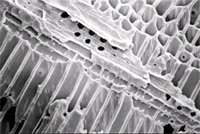 The studies on wood anatomy provide helpful
data that can be
eventually applied on other scientific fields. Under this
line of research, studies on taxonomy (identification), archaeology
(studying charcoal on human settlements) or dendrogeomorphology
(tree-ring response to geomorphic events) are accomplished.
The studies on wood anatomy provide helpful
data that can be
eventually applied on other scientific fields. Under this
line of research, studies on taxonomy (identification), archaeology
(studying charcoal on human settlements) or dendrogeomorphology
(tree-ring response to geomorphic events) are accomplished.
Rubiales, J.M.,
García Amorena, I., García Álvarez,
S., Morla, C., 2008. Anthracological evidence suggests naturalness of Pinus pinaster in
inland southwestern Iberia. Plant Ecology.
doi:10.1007/s11258-008-9439-5 [Download]

Rubiales, J.M.,
Bodoque, J.M., Ballesteros, J.A., Díez, A. 2008. Response of
Pinus sylvestris
roots to sheet-erosion exposure: An anatomical approach. Natural
Hazards and Earth System Sciences, 8, 223-231 . [Download]
Rubiales J. M., García-Amorena I., Alcalde, C. A contribution by means of charcoal analysis to the Late Holocene vegetation landscapes of the southwest Iberian Peninsula. International Symposium on Wood Sciences Proceedings. IAWA. Montpellier (France). Pp 24-25.
Palaeoclimatology and Dendroecology
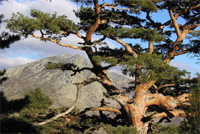 The
study of fossil remains of plants provides data that
allow us to obtain detailed insights into environmental changes into
the past. Macroremains of diverse origin are used as a tool for
palaeoclimatic interpretation. Cuticular studies of rests of leaves of
Quercus gr.
deciduous are studied to obtain past atmospheric CO2 mixing
ratios for the Holocene.
The
study of fossil remains of plants provides data that
allow us to obtain detailed insights into environmental changes into
the past. Macroremains of diverse origin are used as a tool for
palaeoclimatic interpretation. Cuticular studies of rests of leaves of
Quercus gr.
deciduous are studied to obtain past atmospheric CO2 mixing
ratios for the Holocene.
Growth rings can also contribute useful data from any of the scientific fields that are related to. Dendrometric records assess diverse environmental conditions, from palaeoecological environments to chronological questions. Fossil and recent wood cores are used as tools for climatic and environmental interpretation.
García-Amorena, I., Wagner, F., van Hoof, T.B. y
Gómez Manzaneque, F. 2006. Stomatal responses in deciduous
oaks from southern Europe to the anthropogenic atmospheric CO2
increase; refining the stomatal-based CO2 proxy. Review of Palaeobotany
and Palynology. 141(3-4):303-312. [Download]

Bodoque, J.M. ; Díez-Herrero, A.,
Martín-Duque, J.F., Rubiales, J.M., A. Godfrey, J. Pedraza,
Carrasco R.M. Sanz M.A. 2005. Soil erosion rates determined by using
dendrogeomorphological examinations of exposed tree roots: two examples
from Central Spain. Catena 64 (2005) 81–102 [Download]
Iberian Flora and Applied Botany
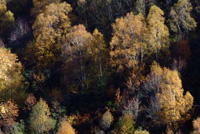 Different
ecosystems are studied under this line of research,
focusing on protected environments and its conservation. It is
also maintained a Herbarium of approximately 40.000 sheets. The study of the Iberian flora compatible with
power lines has
been also accomplished, in order to optimize the revegetation and
maintenance programs as well as the environmental conditions.
Different
ecosystems are studied under this line of research,
focusing on protected environments and its conservation. It is
also maintained a Herbarium of approximately 40.000 sheets. The study of the Iberian flora compatible with
power lines has
been also accomplished, in order to optimize the revegetation and
maintenance programs as well as the environmental conditions.
-
Selected Publications
Arévalo Camacho, J.; Gómez Manzaneque, F.; Morla Juaristi, C. & Roig Soles, J. (Coords.) (1997): Inventario de la Flora Ibérica compatible con las líneas de alta tensión. REE (Red Eléctrica de España/Servicio de Medio Ambiente), 445 pp.
Arévalo, J., J. Roig, C. Morla Juaristi, F. Gómez Manzaneque, E. Bermejo, F. Domínguez, J. Maza, S. Molinero & L. Moreno (1997): Study of the iberian flora compatible with power lines In: James R. Williams et al. Eds. Environmental Concerns in Rights-of-Way Management, 35-45. Ed. Elsevier. Nueva Orleans.
Arévalo, J., J. Roig, F. Gómez Manzaneque, C. Morla, E. Bermejo, F. Domínguez, J. Maza, S. Molinero & L. Moreno (1997): Estudio de la flora ibérica y su relación con la líneas de alta tensión. Segundas Jornadas Líneas Eléctricas y Medio Ambiente: 269-279.
Biodiversity and Vegetal Conservation
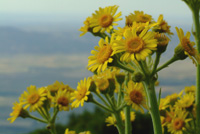 Conservation
of biodiversity is currently one of the research themes that are in the
scientific limelight. Our works focus on vascular plants and try
to contribute to a better understanding of the terrestrial
ecosystems, allowing to adopt useful elements for management and
forest restoration.
Conservation
of biodiversity is currently one of the research themes that are in the
scientific limelight. Our works focus on vascular plants and try
to contribute to a better understanding of the terrestrial
ecosystems, allowing to adopt useful elements for management and
forest restoration.
Our team works in several themes related to
the biology of
conservation of plants, such as cartography of threatened flora,
location and identification of populations of endangered species,
demographic studies and population viability.
-
Recent Publications
Jiménez,
L., Martínez, F. & M. Costa
(2006): Estudio comparado de la diversidad florística en
masas de origen natural y repoblado de Pinus sylvestris L. en la Sierra
de Guadarrama (Sistema Central). Invest Agrar: Sist Recur For. Fuera de
serie, 111-123 [Download
pdf] 
Martínez, F., García Álvarez, S., Rubiales, J.M., García-Amorena, I. & Guerrero, S. (2007): Estado de conservación de Senecio coincyi Rouy. III Congreso de la Sociedad Española de Biología de la Coonservación de Plantas. Tenerife, 2007.
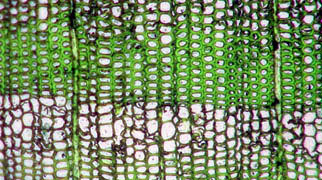

Palaeobotany and Historical Biogeography
The processes that explain the current distribution of the plants are analysed, in a wide spatial and temporal framework, from old geological periods (Mesozoic, Tertiary) to the recent ones (Pleistocene, Holocene)
Rubiales, J.M., García Amorena, I., García Álvarez, S., Gómez Manzaneque, F. 2008. The Late Holocene extinction of Pinus sylvestris in the West of the Cantabrian Range. Journal of Biogeography. doi: 10.1111/j.1365-2699.2008.01925.x [Download corrected proof]
Postigo, J.M., Gómez Manzaneque, F. & Morla, C. in press. Survival and long-term maintenance of tertiary trees in the Iberian Peninsula during the Pleistocene: first record of Aesculus L. (Hippocastanaceae) in Spain. Veget Hist. Archaeobot. doi: 10.1007/s00334-007-0130-x [Download]
Postigo, J.M., Burjachs, F., Gómez Manzaneque, F. and Morla, C., 2007. A palaeoecological interpretation of the lower–middle Pleistocene Cal Guardiola site (Terrassa, Barcelona, NE Spain) from the comparative study of wood and pollen samples. Rev. Palaeobot. Palynol., 146, 247-264 [Download]
Rubiales, J.M., García-Amorena, I., Génova, M., Gómez Manzaneque, F. & C. Morla, 2007. The Holocene history of highland pine forests in a submediterranean mountain: the case of Gredos mountain range (Iberian Central range, Spain). Quaternary Science Reviews 26, 1759–1770. [Download]
García-Amorena, I., Gómez Manzaneque, F. , Rubiales, J.M., Granja, H.M., de Carvalho, G. Soares & Morla, C., 2007. The Late Quaternary coastal forests of western Iberia; a study of their macroremains, Palaeogeography, Palaeoclimatology, Palaeoecology, 254, 448-461 [Download]
Alcalde, C., García-Amorena, I., García Álvarez, S., García Calvo, D., García García, R., Génova, M., Gil Borrell, P., Gómez Manzaneque, F., Maldonado, F.J., Morla, C., Del Nido, J., Postigo, J.M., Regato, P., Río, S., Roig, S., Rubiales, J.M. y Sánchez Hernando, L.J. 2006. Contribución de la Paleofitogeografía a la interpretación del paisaje vegetal ibérico: estado de conocimientos y nuevas perspectivas de investigación. Invest. Agrar.: Sist. Recur.For. Fuera de serie: 40-54. [Download]
Alcalde, C.; García-Amorena, I.; Gómez Manzaneque, F.; Maldonado, J.; Morla , C., Postigo, J.M.; Rubiales, J.M.; Sánchez Hernando, L.J. 2004. Nuevos datos de carbones y maderas fósiles de Pinus pinaster Aiton en el Holoceno de la Península Ibérica. Invest. Agrar.: Sist. Recur.For. 13 (3).
[Download]